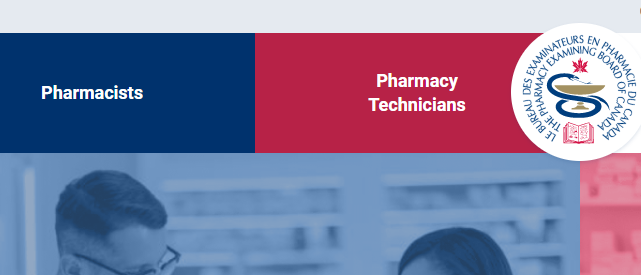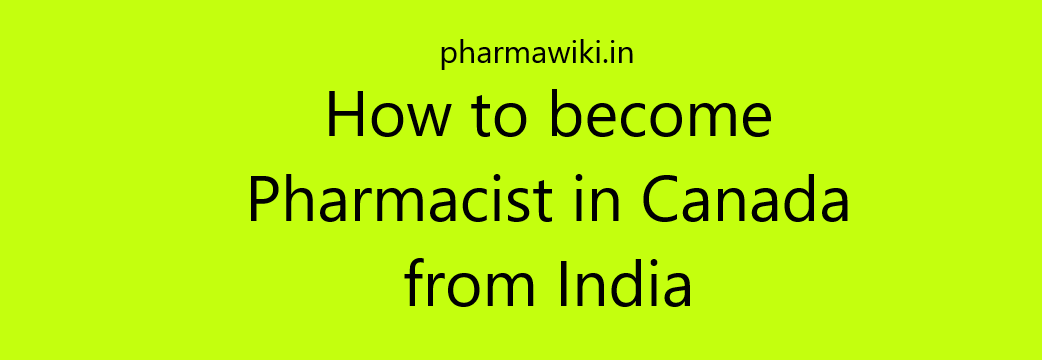Navigating Excellence: Top Pharmacy Universities in Canada for MS in Pharmacy
Introduction
Canada’s higher education system is renowned for its quality and diversity, offering a wide array of academic programs for international students. Among the numerous disciplines, pharmacy education in Canada stands out as one of the most sought-after fields, given the growing demand for skilled healthcare professionals. This comprehensive guide explores the top pharmacy universities in Canada for pursuing a Master of Science (MS) in Pharmacy. We delve into the significance of choosing the right university, the offerings of these institutions, admission requirements, financial aid opportunities, and the rewarding career prospects that await graduates.
Overview of the Canadian Education System
Canada boasts a robust and globally recognized education system. It consistently ranks among the top destinations for international students due to its high academic standards, diverse student communities, and welcoming environment.
Growing Demand for Pharmacy Graduates
The healthcare landscape in Canada is evolving, with an aging population and increased emphasis on preventive care. This shift has created a growing demand for healthcare professionals, including pharmacists. Pursuing an MS in Pharmacy in Canada can lead to rewarding career opportunities both within the country and internationally.
Importance of Choosing the Right University
Selecting the right university for your pharmacy education is a pivotal decision that can significantly impact your career prospects. It’s crucial to consider several factors when making this choice.
Impact of University Choice on Career Prospects
The reputation of the university you attend can greatly influence your employability and career trajectory. Many employers, especially in the healthcare sector, value degrees from well-regarded institutions.
Factors to Consider when Selecting a Pharmacy Program
Accreditation: Ensure that the program you choose is accredited by relevant authorities and recognized internationally.
Research Opportunities: Universities with strong research programs offer students the chance to engage in cutting-edge pharmaceutical research.
Location: Consider the geographical location and whether it aligns with your personal preferences and career goals.
Cost and Financial Aid: Evaluate the total cost of your education, including tuition, living expenses, and available financial aid options.
Alumni Network: A robust alumni network can provide valuable connections and mentorship opportunities.
Top Pharmacy Universities in Canada
Canada is home to several world-class universities that offer exceptional pharmacy programs. Let’s explore some of the top choices:
University of Toronto
Academic Excellence: The University of Toronto consistently ranks among the top pharmacy programs globally, known for its rigorous curriculum and outstanding faculty.
Research Opportunities: The university boasts numerous research centers and labs, offering students unparalleled opportunities to engage in cutting-edge research.
Notable Alumni: Graduates of the University of Toronto’s pharmacy program have gone on to achieve remarkable success in various sectors of the pharmaceutical industry.
University of British Columbia (UBC)
Robust Curriculum: UBC’s pharmacy program is known for its comprehensive curriculum, which covers a wide range of pharmaceutical topics.
Research Initiatives: The university actively promotes research, providing students with access to state-of-the-art laboratories and research facilities.
Campus Life: UBC’s beautiful campus, located in Vancouver, offers a vibrant and diverse student community.
University of Alberta
Strong Focus on Pharmacy Research: The University of Alberta emphasizes research, making it an ideal choice for students interested in pursuing research-oriented careers.
Collaborative Learning Environment: The program fosters collaboration among students, encouraging teamwork and innovation.
Industry Connections: The university has strong ties to the pharmaceutical industry, providing students with networking opportunities and potential internships.
University of Waterloo
Co-op Opportunities: Waterloo’s pharmacy program offers co-op opportunities that allow students to gain practical experience in various healthcare settings.
Interdisciplinary Approach: The university encourages interdisciplinary collaboration, exposing students to a wide range of healthcare perspectives.
Technological Advancements: Waterloo incorporates cutting-edge technology into its pharmacy curriculum, preparing students for the digital healthcare landscape.
McGill University
Bilingual Program: Located in Montreal, McGill offers a bilingual pharmacy program, allowing students to enhance their language skills while studying.
Research Centers of Excellence: The university hosts renowned research centers focused on pharmaceutical sciences.
Global Perspective: McGill’s diverse student body and global connections provide students with a global perspective on pharmacy practice.
University of Manitoba
Innovative PharmD Program: Manitoba offers a unique Doctor of Pharmacy (PharmD) program that combines practical training with coursework.
Clinical Experience: The program provides extensive clinical experience, preparing students for real-world pharmacy practice.
Community Engagement: The University of Manitoba actively engages with the community, fostering a sense of social responsibility among students.
University of Saskatchewan
Rural and Remote Health Emphasis: Located in Saskatoon, the program places a strong emphasis on pharmacy practice in rural and remote areas.
Indigenous Health Initiatives: The university is committed to Indigenous health, offering opportunities for students to engage with Indigenous communities.
Clinical Placements: Students benefit from a wide range of clinical placements, gaining diverse experiences in healthcare settings.
Dalhousie University
Eastern Canada’s Premier Program: Dalhousie’s College of Pharmacy is a leading institution in Eastern Canada, offering a comprehensive pharmacy program.
Research Opportunities: The university actively promotes research in pharmaceutical sciences, allowing students to engage in meaningful research projects.
Maritime Charm: Located in Halifax, Dalhousie University provides students with a unique maritime cultural experience.
Université de Montréal
Francophone Excellence: The University of Montreal offers a francophone pharmacy program for those seeking to study in French.
Clinical Pharmacy Focus: The program places a strong emphasis on clinical pharmacy practice, preparing students for patient-centered care.
Vibrant Cultural Scene: Located in Montreal, the university offers students access to a vibrant cultural scene.
Admission Requirements
Admission requirements for pharmacy programs in Canada typically include the following:
Common Admission Prerequisites
Bachelor’s Degree: A completed bachelor’s degree, often with specific prerequisite courses in biology, chemistry, and mathematics.
Academic Transcripts: Submission of official academic transcripts from all previously attended institutions.
Letters of Recommendation: Usually, two to three letters of recommendation from academic or professional sources.
Statement of Intent: A personal statement outlining your academic and career goals.
Interview: Some programs may require an interview as part of the admission process.
Standardized Tests (if applicable)
English Language Proficiency: For international students, proof of English language proficiency is often required, typically through tests like TOEFL or IELTS.
Scholarships and Financial Aid – CANADA
Pursuing higher education can be a significant financial investment. Fortunately, there are various scholarship and financial aid options available to international students pursuing pharmacy programs in Canada.
Government Scholarships and Grants
Canadian Government Scholarships: The Canadian government offers various scholarships and grants to international students, including the Vanier Canada Graduate Scholarships and the Canadian Commonwealth Scholarship Program.
University-specific Scholarships
Entrance Scholarships: Many universities offer scholarships specifically for incoming international students based on academic merit.
Pharmacy Program Scholarships: Some pharmacy programs have scholarships designated for pharmacy students.
External Funding Sources
International Scholarships: Various organizations, both public and private, offer scholarships to international students pursuing higher education in Canada.
Pharmaceutical Industry Scholarships: Some pharmaceutical companies offer scholarships to students pursuing pharmacy degrees.
Career Opportunities and Networking of Canada
Pharmacy programs in Canada provide numerous opportunities for students to build their careers and professional networks.
Cooperative Education and Internship Programs
Co-op Opportunities: Several pharmacy programs in Canada offer co-op or internship opportunities, allowing students to gain hands-on experience in healthcare settings.
Career Services and Support
Career Guidance: Universities often provide career counseling services to help students explore career options and prepare for job searches.
Job Placement: Some programs have strong connections with employers in the healthcare industry, facilitating job placement for graduates.
Professional Associations and Networking Events
Pharmacy Associations: Joining professional associations like the Canadian Pharmacists Association (CPhA) can provide access to networking events and resources.
Conferences and Seminars: Universities frequently host conferences, seminars, and workshops, offering students opportunities to network with industry professionals.
Life as an International Student
Studying abroad is not just about academics; it’s also about adapting to a new culture and environment.
Cultural Adaptation
Orientation Programs: Most universities offer orientation programs to help international students acclimate to Canadian culture and campus life.
International Student Services: Dedicated services and support are available to assist international students with immigration, housing, and cultural integration.
Student Accommodation
On-Campus Housing: Many universities provide on-campus housing options for international students.
Off-Campus Housing: Alternatively, students can explore off-campus housing options near the university.
Campus Facilities and Resources
Library and Research Facilities: Access to well-equipped libraries and research facilities is essential for academic success.
Health Services: Universities typically have health services to address students’ medical needs.
Challenges and Opportunities in Canadian Pharmacy Education
While Canadian pharmacy programs offer exceptional opportunities, they also come with their set of challenges and opportunities:
Current Trends in Pharmacy Education
Shift towards Clinical Focus: Pharmacy education is evolving to place a stronger emphasis on clinical skills and patient-centered care.
Interprofessional Collaboration: Collaboration among healthcare professionals is becoming increasingly important, with pharmacy graduates playing vital roles in healthcare teams.
Addressing Challenges and Seizing Opportunities
Adapting to Technological Advancements: Pharmacy students are adapting to digital tools and technology, which are transforming healthcare practices.
Embracing Diversity and Inclusion: Pharmacy programs are focusing on diversity and inclusion to better serve diverse patient populations.
Conclusion
Choosing the right university for your MS in Pharmacy in Canada is a decision that can shape your future career. The top pharmacy programs in Canada offer a wealth of opportunities for academic and professional growth. By considering factors like program offerings, location, and financial aid options, you can make an informed choice that aligns with your goals. A pharmacy degree from a prestigious Canadian institution not only opens doors to rewarding career opportunities but also allows you to contribute to the evolving landscape of healthcare in Canada and beyond.
References
Cite sources and references used in the article.
University of Toronto – Leslie Dan Faculty of Pharmacy:
Website: Leslie Dan Faculty of Pharmacy
University of British Columbia (UBC) – Faculty of Pharmaceutical Sciences:
Website: Faculty of Pharmaceutical Sciences
University of Alberta – Faculty of Pharmacy and Pharmaceutical Sciences:
Website: Faculty of Pharmacy and Pharmaceutical Sciences
University of Waterloo – School of Pharmacy:
Website: School of Pharmacy
McGill University – Faculty of Pharmacy:
Website: Faculty of Pharmacy
University of Manitoba – College of Pharmacy:
Website: College of Pharmacy
University of Saskatchewan – College of Pharmacy and Nutrition:
Website: College of Pharmacy and Nutrition
Dalhousie University – College of Pharmacy:
Website: College of Pharmacy
Université de Montréal – Faculté de pharmacie (French Language):
Website: Faculté de pharmacie
This comprehensive guide provides valuable insights into pursuing an MS in Pharmacy in Canada. It covers the top universities, admission requirements, financial aid options, and the exciting career prospects awaiting graduates. By understanding the importance of university choice and considering the factors that matter most to you, you can embark on a successful academic and professional journey in the field of pharmacy.
Disclaimer:
Please note that it’s essential to visit each university’s official website. So, for the most up-to-date and accurate information regarding their pharmacy programs, admission requirements, and application procedures you need to visit individual official websites.







